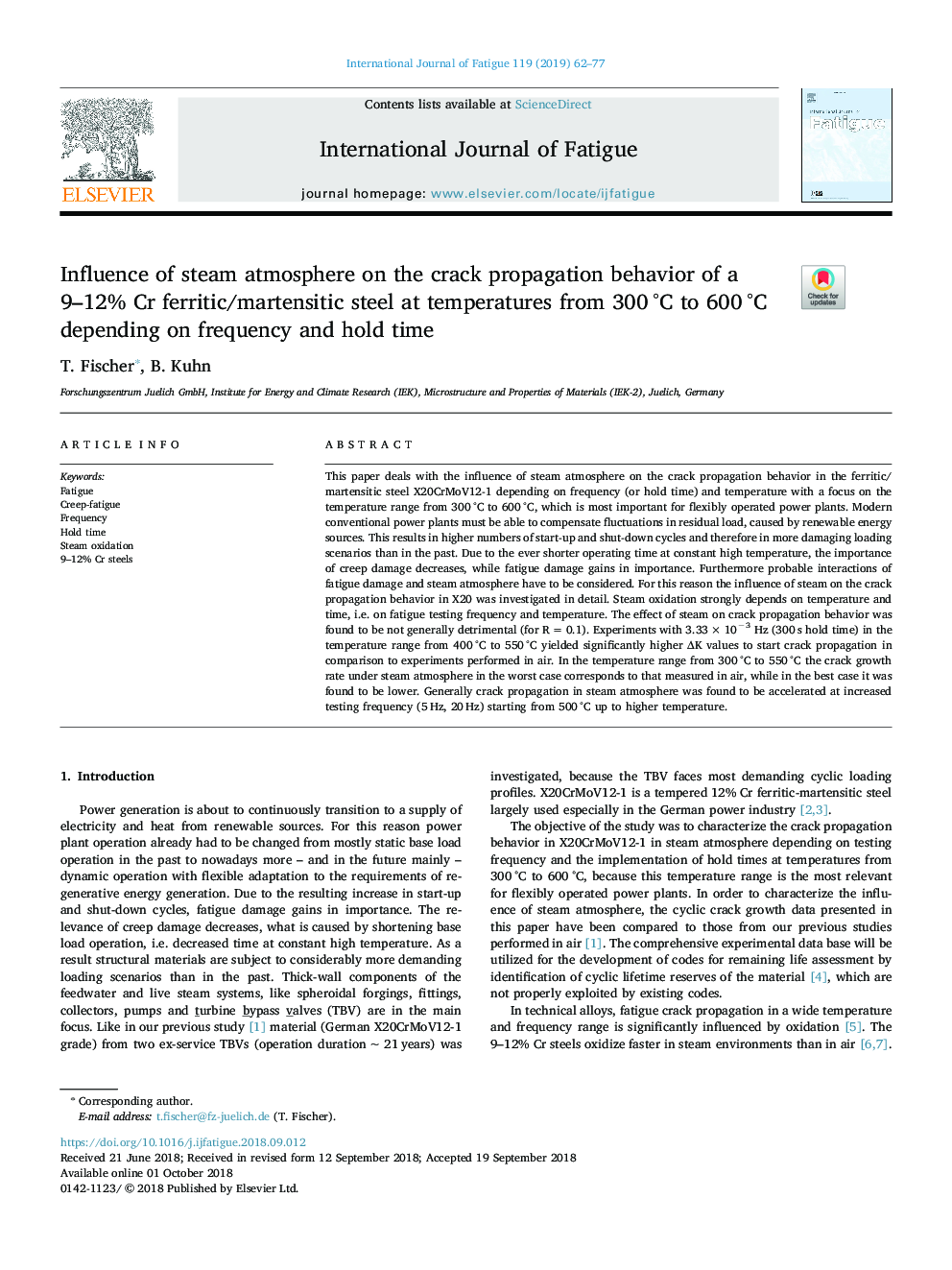| Article ID | Journal | Published Year | Pages | File Type |
|---|---|---|---|---|
| 11016301 | International Journal of Fatigue | 2019 | 16 Pages |
Abstract
This paper deals with the influence of steam atmosphere on the crack propagation behavior in the ferritic/martensitic steel X20CrMoV12-1 depending on frequency (or hold time) and temperature with a focus on the temperature range from 300â¯Â°C to 600â¯Â°C, which is most important for flexibly operated power plants. Modern conventional power plants must be able to compensate fluctuations in residual load, caused by renewable energy sources. This results in higher numbers of start-up and shut-down cycles and therefore in more damaging loading scenarios than in the past. Due to the ever shorter operating time at constant high temperature, the importance of creep damage decreases, while fatigue damage gains in importance. Furthermore probable interactions of fatigue damage and steam atmosphere have to be considered. For this reason the influence of steam on the crack propagation behavior in X20 was investigated in detail. Steam oxidation strongly depends on temperature and time, i.e. on fatigue testing frequency and temperature. The effect of steam on crack propagation behavior was found to be not generally detrimental (for Râ¯=â¯0.1). Experiments with 3.33â¯Ãâ¯10â3 Hz (300â¯s hold time) in the temperature range from 400â¯Â°C to 550â¯Â°C yielded significantly higher ÎK values to start crack propagation in comparison to experiments performed in air. In the temperature range from 300â¯Â°C to 550â¯Â°C the crack growth rate under steam atmosphere in the worst case corresponds to that measured in air, while in the best case it was found to be lower. Generally crack propagation in steam atmosphere was found to be accelerated at increased testing frequency (5â¯Hz, 20â¯Hz) starting from 500â¯Â°C up to higher temperature.
Related Topics
Physical Sciences and Engineering
Engineering
Mechanical Engineering
Authors
T. Fischer, B. Kuhn,
